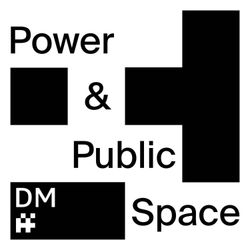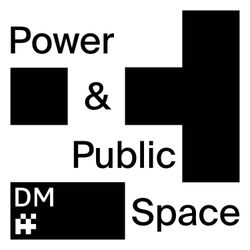Latest episode

10. Dank Lloyd Wright – Meme Space
13:54||Ep. 10Memes are increasingly permeating architectural discourse, with Instagram accounts like Dank Lloyd Wright “holding models of power to account, especially when power manifests as aesthetics.”The meme itself, in Dank Lloyd Wright’s hands, is a sophisticated visual tool, with its own codes, styles and languages that mirror the ever-shifting currents of internet culture. DLW’s critiques and the debates around them take place almost exclusively online, and in the comments section of their instagram account in particular, in an era where public life itself need not extend beyond the screen. Meme space, as the anonymous Instagram collective Dank Lloyd Wright explains, “has the potential to showcase what criticism could be when it is detached from the profit motives of advertising, self promotion, and clout chasing.” In this episode DLW discuss what ‘meme space’ means to them, and the kind of virtual public forums it fosters.Power & Public Space is a co-production of Drawing Matter & the Architecture Foundation
More episodes
View all episodes

9. Ana Bonet Miro – Fun Palace
31:22||Ep. 9Since its conception in the 1960’s, the Fun Palace has circulated widely in architecture culture, and mainly through its provocative collages, characterized by giant space-frame trusses framing a flexible shed of interactive cultural events, accessible to all. These images persist as inspiring propositions for a new physical infrastructure of cultural exchange, and while they are often primarily attributed to Cedric Price, the project was actually the result of close collaboration between Price and the experimental theatre director Joan Littlewood.Littlewood’s radically inclusive programme aimed to counteract the elitism built into British society and arts policy of the time, reflecting her ambitions for a “theatre for all”. In this episode the architect and academic Ana Bonet Miro discusses how the Fun Palace was itself conceived as a kind of theatrical project. She also explains the impact this speculative project had on public discourse and the shaping of local developments of the time, how the Fun Palace might affect the way we conceive of public space today, and the kinds of lessons architects can learn from Littlewood and Price's collaboration. Power & Public Space is a co-production of Drawing Matter & the Architecture Foundation
8. Markus Lähteenmäki – Monument to the Victims of the Revolution
19:09||Ep. 8Markus Lateenmaaki’s research explores, in part, how architecture became instrumental in the societal and cultural transformations that took place in revolutionary Russia. It’s worth noting this episode was recorded in early 2022, before the Russian invasion of Ukraine; in fact the discussion doesn’t focus on contemporary Russian politics and culture, but instead reflects on the aftermath of the Russian Revolution of 1917, and the ways in which Russian people altered and re-framed the imperialist monuments and public spaces around them as power was ceded from the monarchy and aristocracy and taken up by the Bolshevik party. Parallels are also drawn to contemporary debates on how to contend with retrograde monuments still standing in public spaces. Lateenmaaki also unpacks the motivations behind Lev Rudnev’s monument to the Victims of the Revolution, erected in the field of Mars in st petersburg, which eschewed the traditional gathering place and conduit for public movements across the field through the streets, recasting the city itself as a monument to collective life.Power & Public Space is a co-production of Drawing Matter & the Architecture Foundation
7. Mabel O. Wilson – Memorial to Enslaved Labourers, University of Virginia
32:51||Ep. 7In 2020 The Memorial to Enslaved Labourers opened at the University of Virginia, designed as a collaboration between Höweler+Yoon Architecture, Mabel O. Wilson, landscape architects Gregg Bleam and Frank Dukes, and the artist Eto Otitigbe. As Wilson has explained, “civic buildings and monuments in the U.S. are often emblematic of a disavowal of the founding precepts of liberty, equality and justice, where they become sites to imagine and enact American whiteness.” In this episode Wilson discusses how the memorial was conceived and designed to assert its position within the campus’s Eurocentric architectural context, whilst addressing the university’s history of racism and recovering lost narratives of enslaved people in the process. Power & Public Space is a co-production of Drawing Matter & the Architecture Foundation
6. Andre Patrao – Chora L Works (Parc de la Villette)
23:59||Ep. 6Parc de la Villette was emblematic of the strong ties made between the disciplines of architecture and philosophy in the1980's, where “Deconstructivism” in particular became a theoretical framework through which buildings and landscapes were both designed and interpreted. Visual fragmentation and conceptual links to semiotic analysis characterised this period of architecture, and originating in projects such as Chora L. Works. A collaboration between Peter Eisenman and Jaques Derrida, the unrealised Chora project was intended to stand within the Parc de la Villette complex as an ode to a dialogue between architecture and philosophy. In light of such pressing issues as climate change, decolonisation and spatial inequality, the formal experimentation and philosophical inquiry of Chora L Works can appear abstract and disengaged; In this episode Andre Patrao reflects on this period of recent architectural history and what can we learn from it.Power & Public Space is a co-production of Drawing Matter & the Architecture Foundation
5. Mark Wallinger – State Britain
17:58||Ep. 5Much of Mark Wallinger’s art exists in public space. He’s made films and performance pieces set in tube stations and airports, and was the first artist to occupy the empty fourth plinth in Trafalgar Square in 1999. In this episode, Wallinger discusses the installation “State Britain”, which reconstructs a protest encampment originally erected in Parliament Square by the peace activist Brian Haw (in opposition to UK foreign policy in Iraq). The encampment was dismantled in 2006 under a new decree called “The Serious Organised Crime and Police Act”, effectively drawing a 1km radius around parliament within which unauthorised protests are prohibited. This protest exclusion zone happens to run right through the middle of Tate Britain, where Wallinger faithfully reconstructed Haw’s encampment, placing it literally half in and half out of this threshold of controlled expression, with the line itself clearly marked on the floor. The installation was both a continuation of Haw’s protest, as well as an artwork about it, and the line it traced became a kind of territorial drawing, marking a disputed boundary around what can be said in opposition to political authority, as well where, and in what context, we can say it.Power & Public Space is a co-production of Drawing Matter & the Architecture Foundation
4. Jonas Žukauskas – Forest Parts
28:49||Ep. 4When we think about public space, we tend to consider the street, the plaza, the park or the square - urban spaces for people to engage in civic life. In this episode Jonas Žukauskas discusses his consideration of the forest as a space of social engagement, in relation to the project “Forest Parts”. Initiated in 2019 in collaboration with Jurga Daubaraitė, Forest Parts is ongoing project that, as Žukauskas and Daubaraitė explain, “offers to perceive the forest as an infrastructure formed by civic consensus. The unique cultural landscape of the Curonian Spit and the forestation process initiated in the 19th century serve as a case study of forest management works in this complex space to interrelate a series of ecological, recreational, representational, and industrial narratives.”In this episode Žukauskas discusses architecture as a cultural practice, which, in the case of the Forest Parts project, is deemed capable of “enhancing the optics through which society senses a forest.” He also expands on the novel forms of drawing and representation deployed to bring the public to a more intimate understanding of the forest itself. Power & Public Space is a co-production of Drawing Matter & the Architecture Foundation
